Welcome to 2022 on my blog! I still have a few sketchbook outtakes to share from the end of last year, and a few from January, so I might as well start with a sketchbook tour.
Most of these still are studies of local orchids and other plants. In 2022 I started things very slowly with landscape and tree studies – I’ve really come to like drawing trees without leaves.
I hope you’ll enjoy!
Here’s a video version of this post:
Sketchbook Tour Winter 2021/22 (video)
I rarely draw fish, but for on ongoing bigger project I needed to familiarize myself with a few local fish species like this beautiful river trout (Salmo trutta fario).
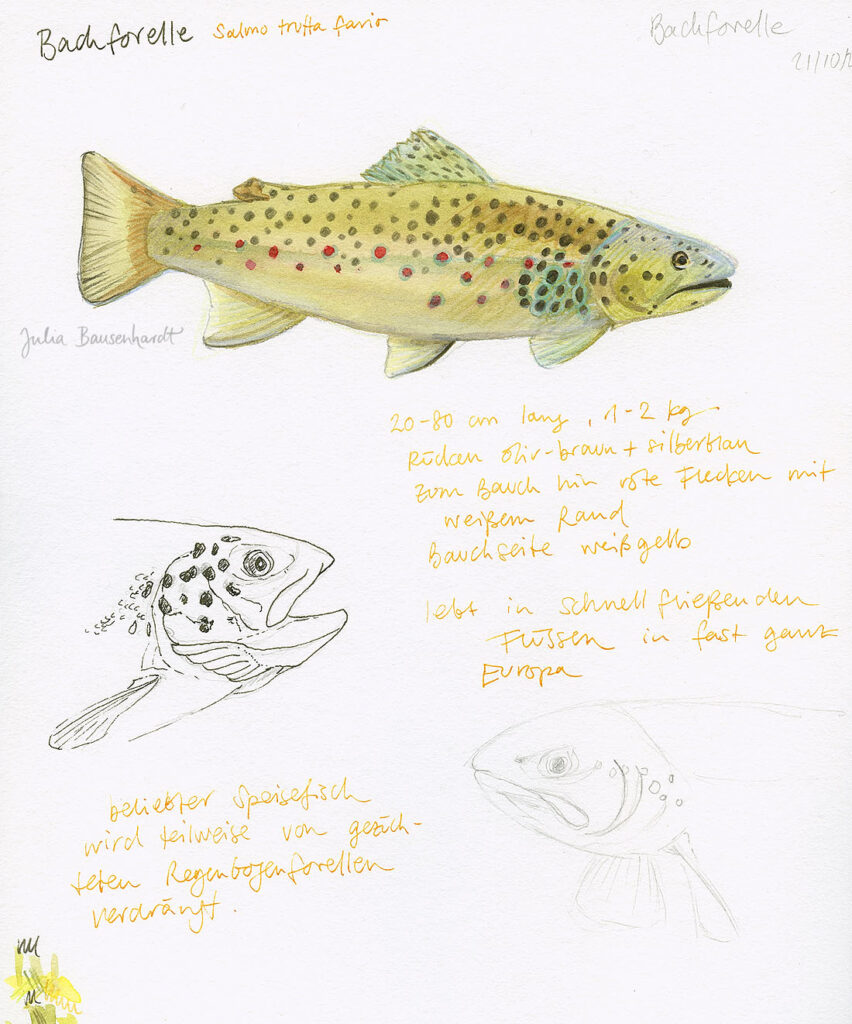
There are a lot of plants that grow near or in rivers that I haven’t had the chance to study closer until now, like the loosestrife (Lythrum salicaria) and water plantain (Alisma plantago-aquatica) and the flowering rush (Butomus umbellatus).
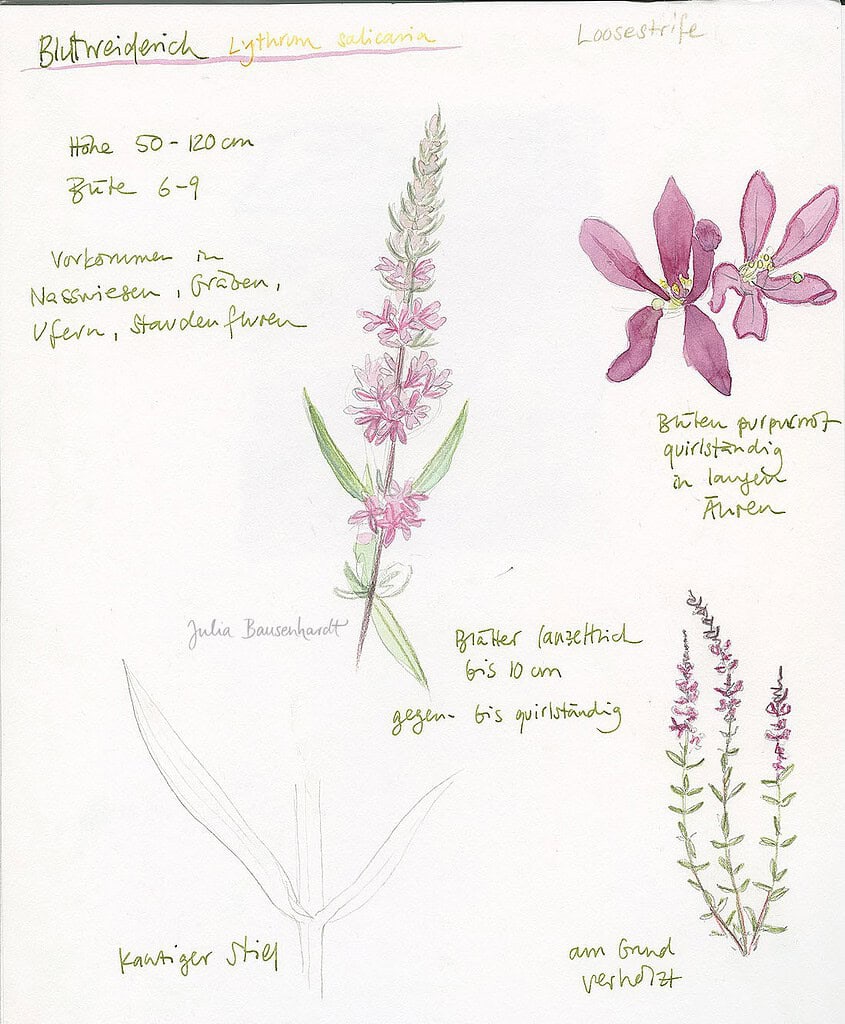
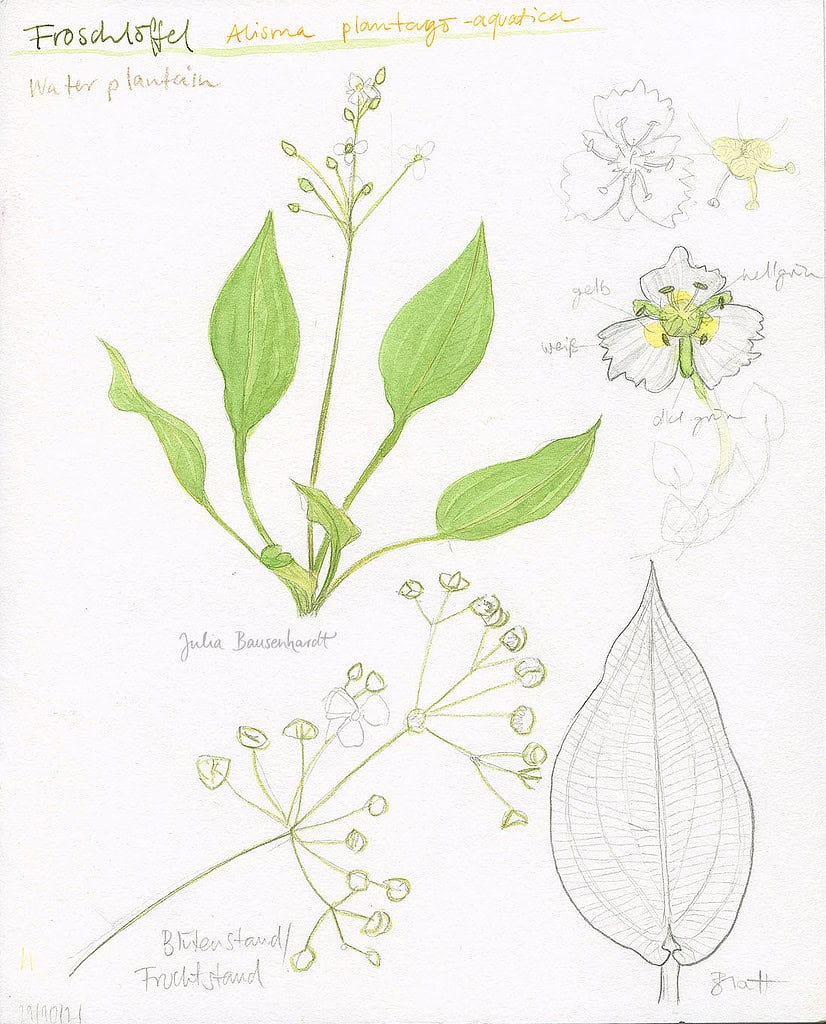
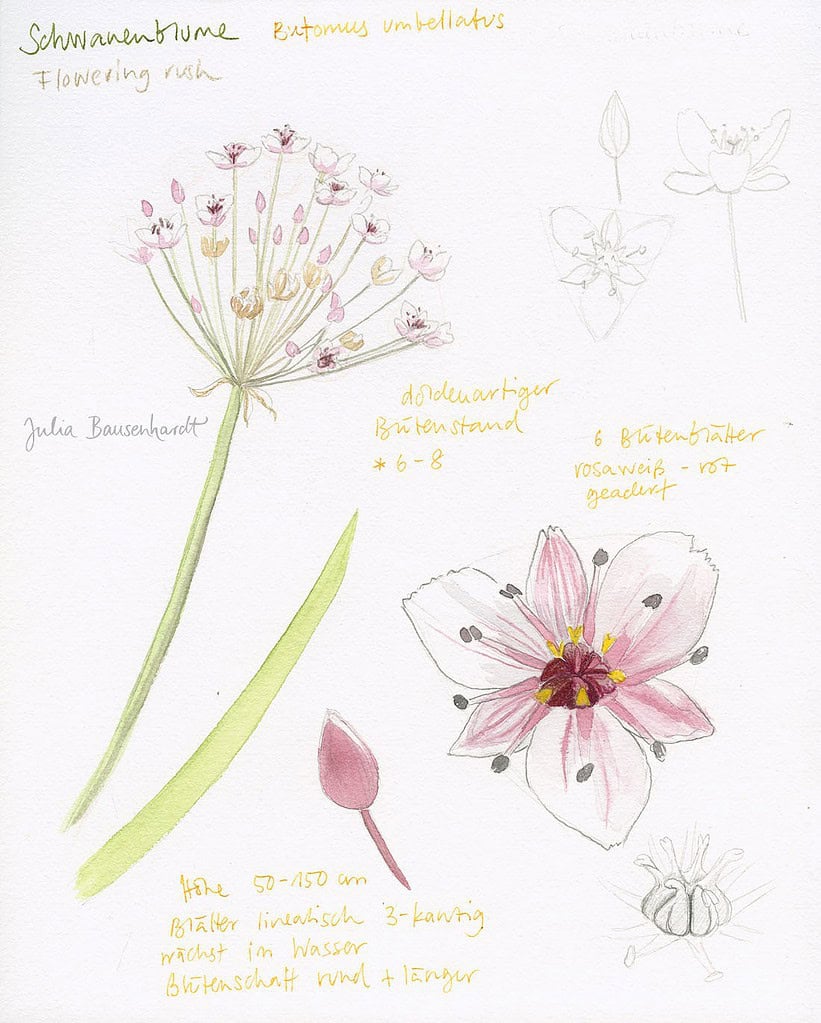
And of course, there are different species of dragonflies near the water (emperor dragonfly, banded demoiselle).
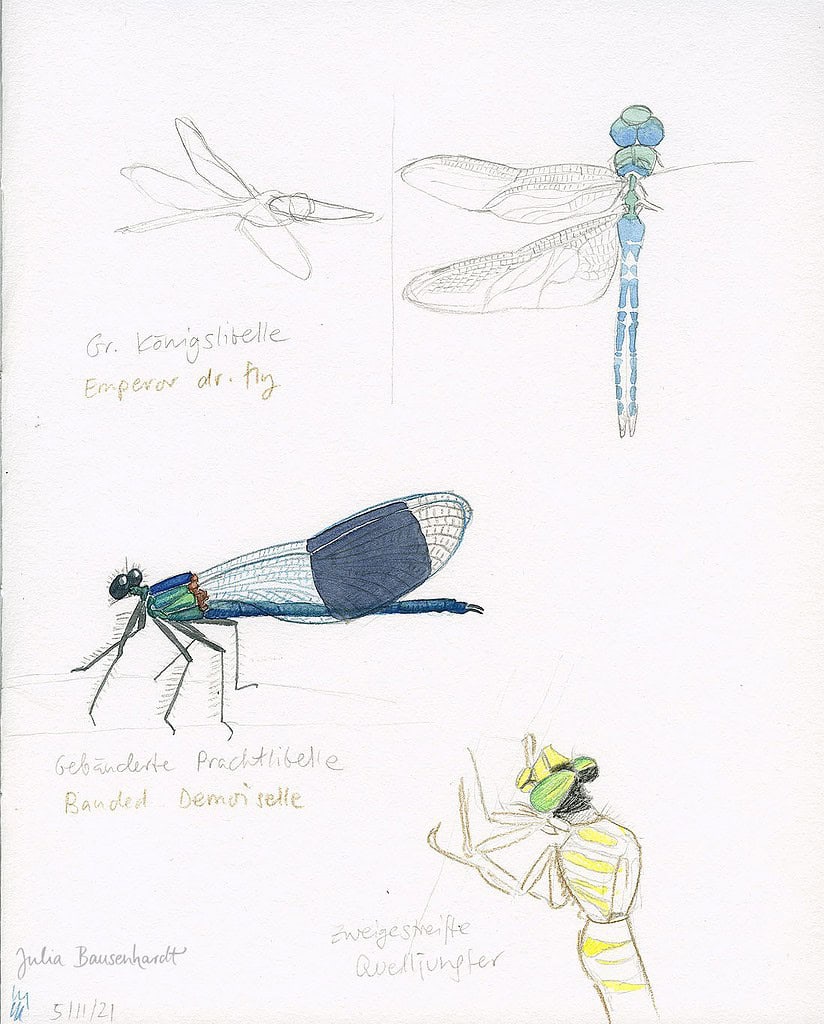
While working on an information board about orchids, I was introduced to many areas that I want to scout this year during the orchid bloom. Lady’s slipper (Cypripedium calceolus), fly orchid (Ophrys insectifera) and early purple orchid (Orchis mascula) are just a few of the local orchids that can be found here.
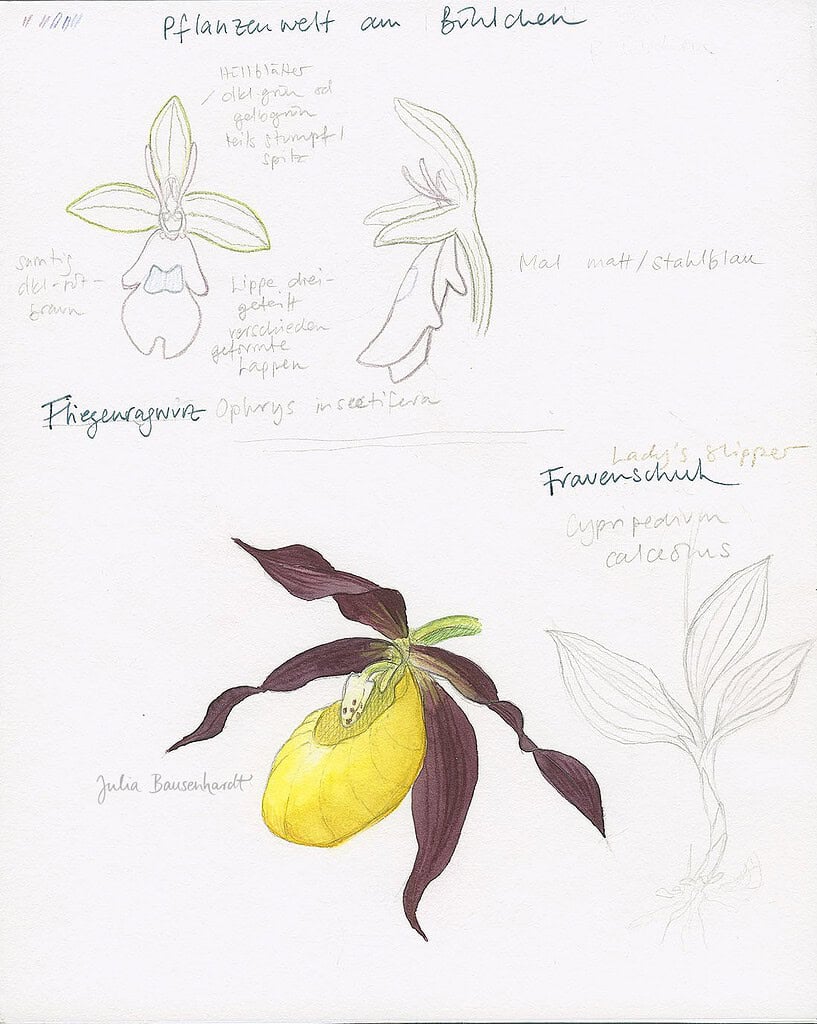

More detailed study of the early purple orchid, a fragrant orchid’s blossom (Gymnadenia conopsea), and a full-sized white helleborine (Cephalantera damasonium).
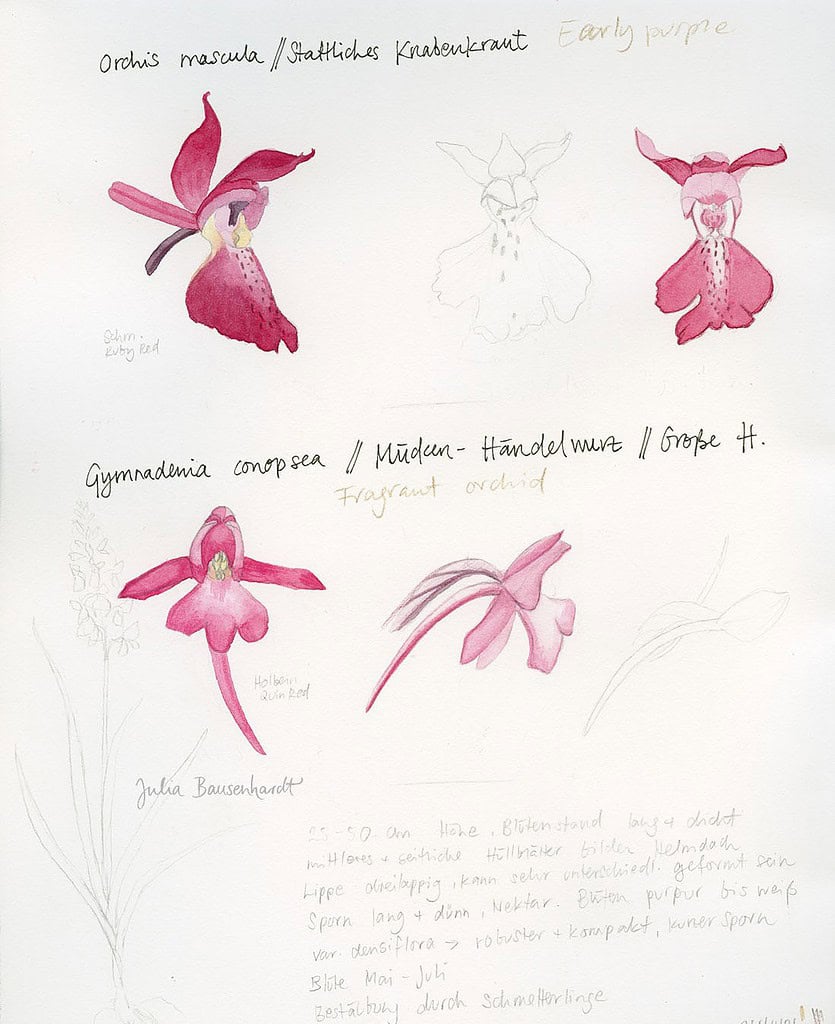
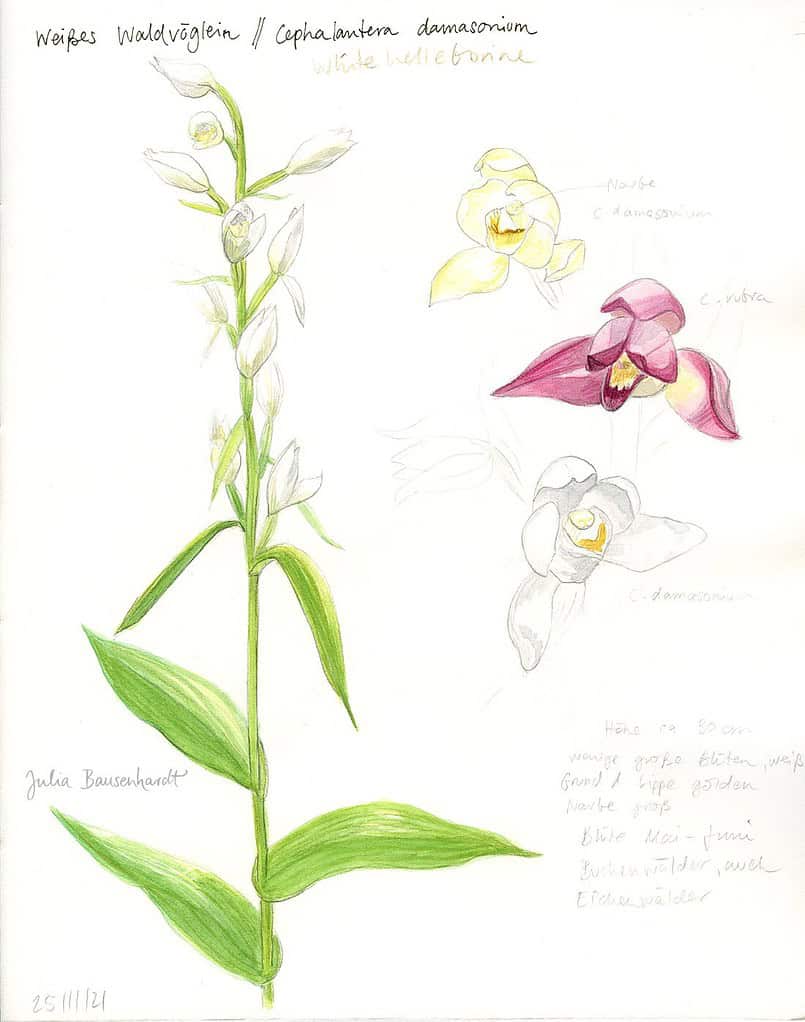
Even more orchids that I hopefully will see for real this spring: lady orchid (Orchis purpurea), heath spotted orchid (Dactylorhiza maculata), lesser butterfly orchid (Platanthera bifolia), creeping lady’s tresses (Goodyera repens).


And an entire page featuring different orchid blossoms. These were fun to do!
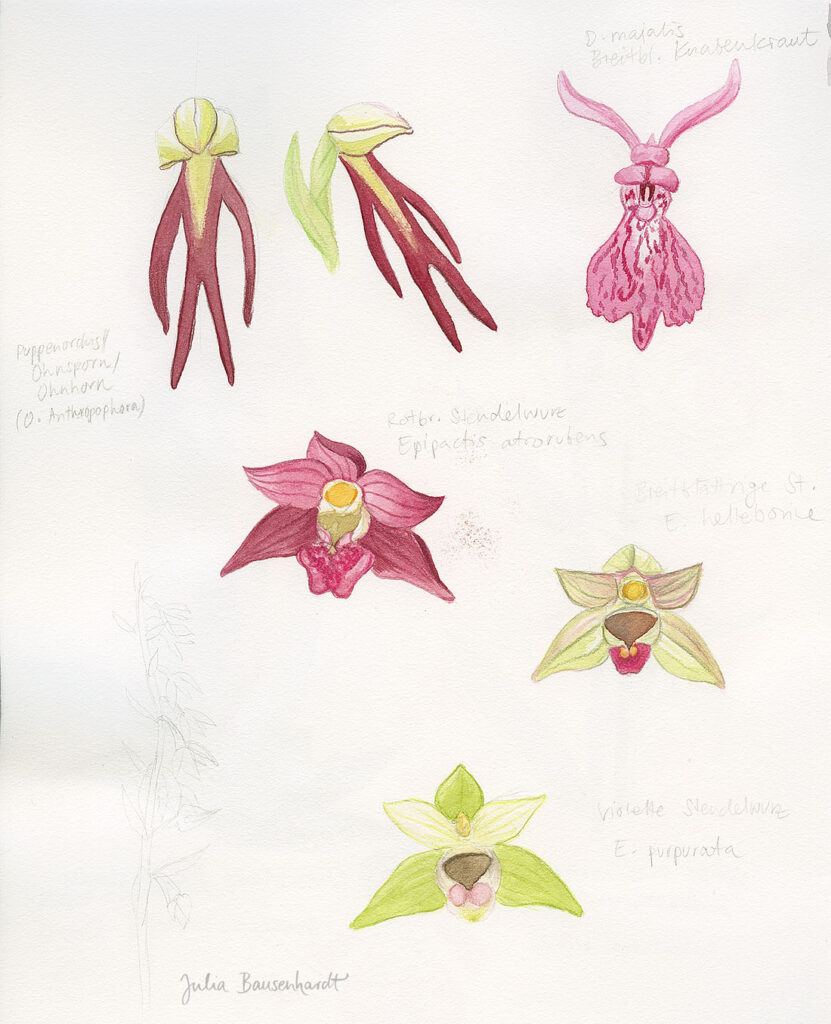

During my holiday break, I focused mainly on a few bird studies. We had a sparrowhawk visiting the garden. There are more birds of prey here recently. I frequently see red kites and a kestrel, too.
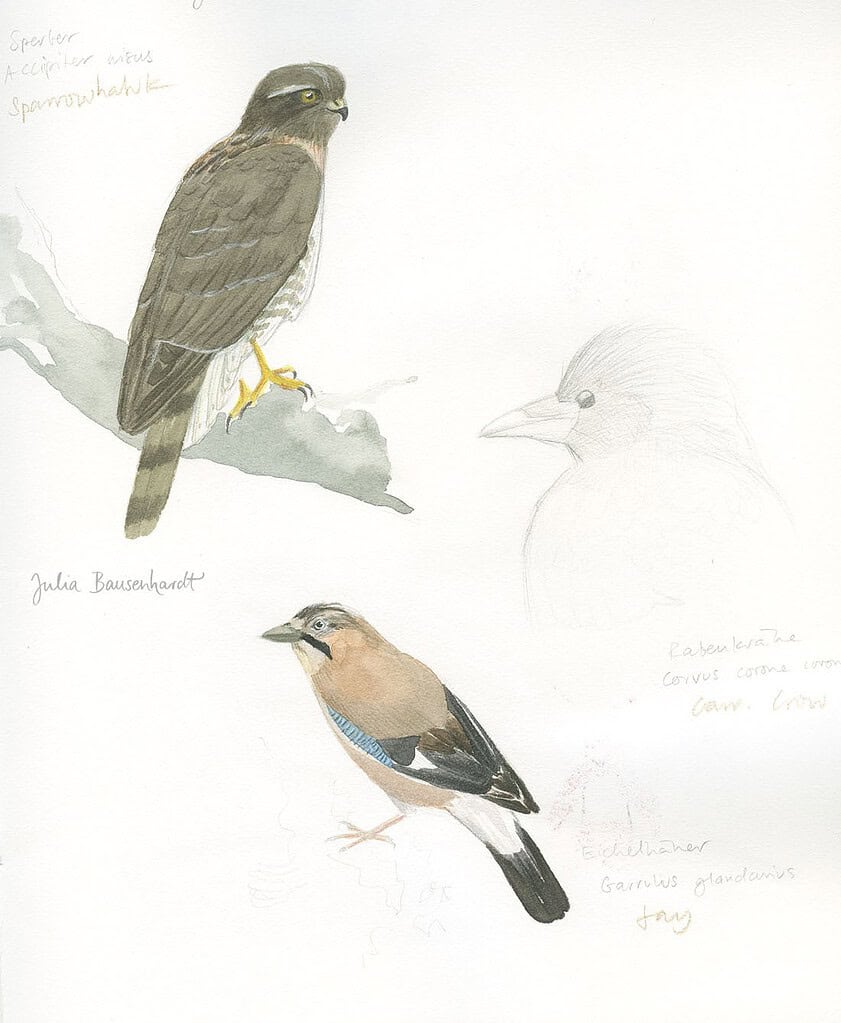
One the day I got my booster vaccination there was white frost on everything, quite the beautiful sight.

More tree studies and a small plant that I found on the cemetery wall. There is actually lots to find there!
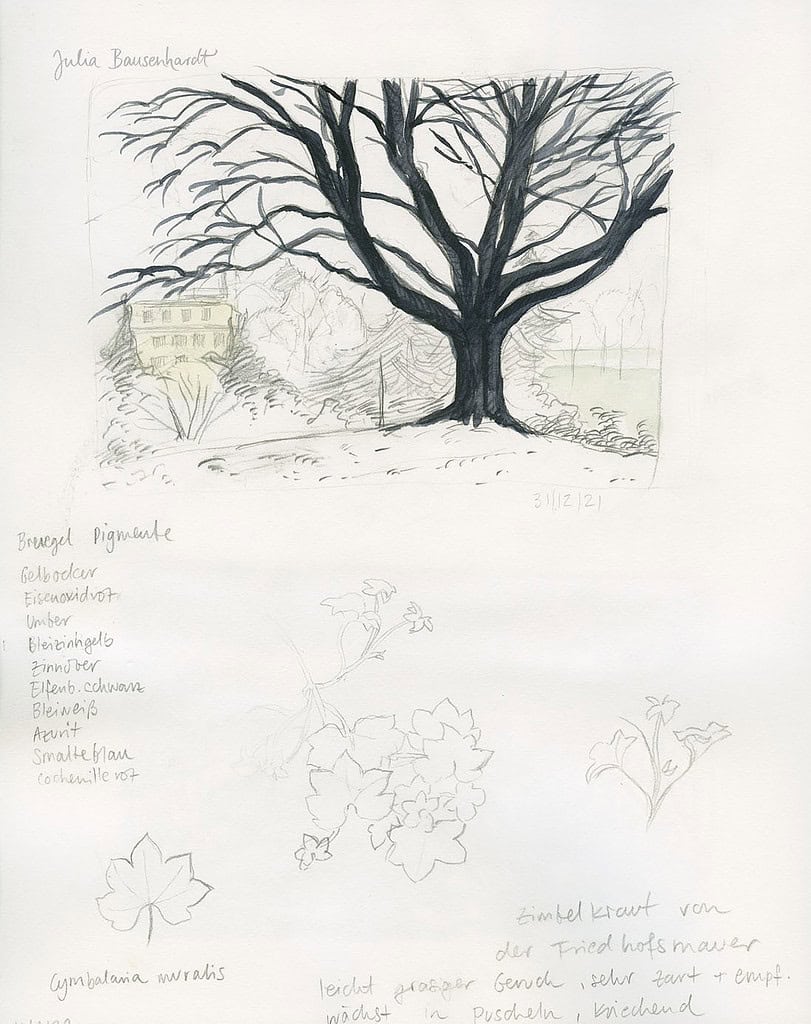
A kestrel hanging out in a wintery landscape. Clouds and tree turned out very cartoonish, but I like the colors.
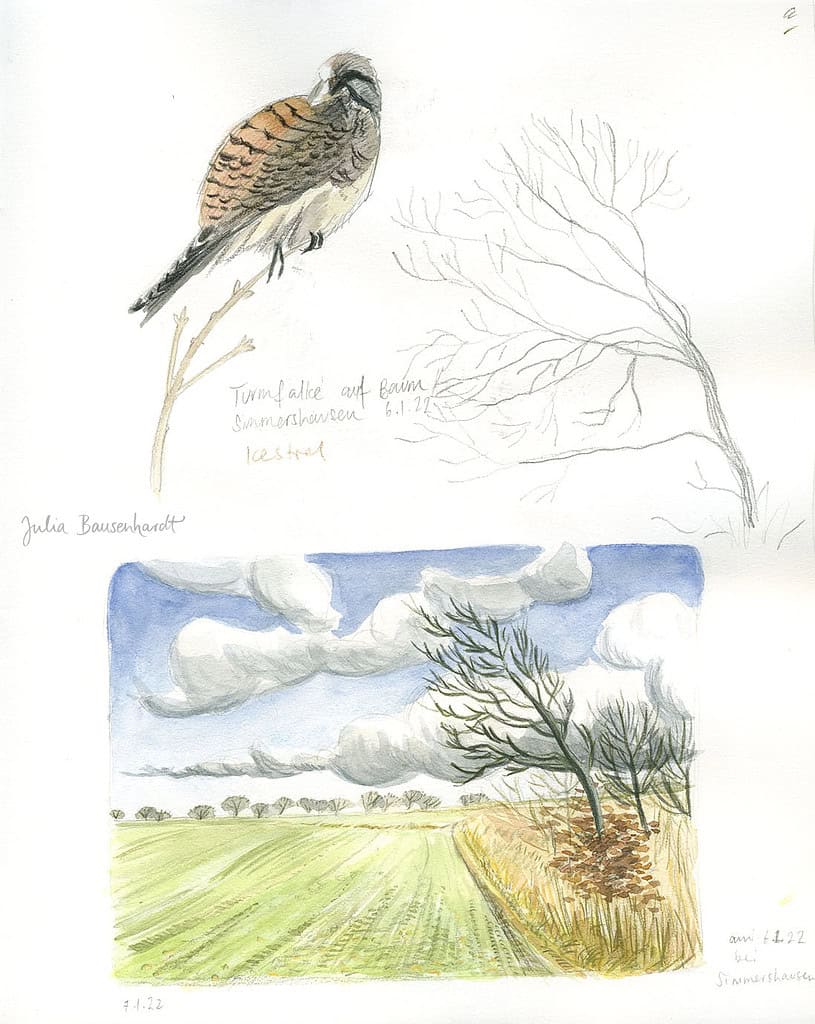
I really like these massive willows with their spiky heads which have a wonderful calligraphic quality. I’m really enjoying tree studies this winter. All of these are done from my own photos, by the way, since it’s too cold for me right now to spend a lot of time outside. On the right side, a quick landscape with a single tree.

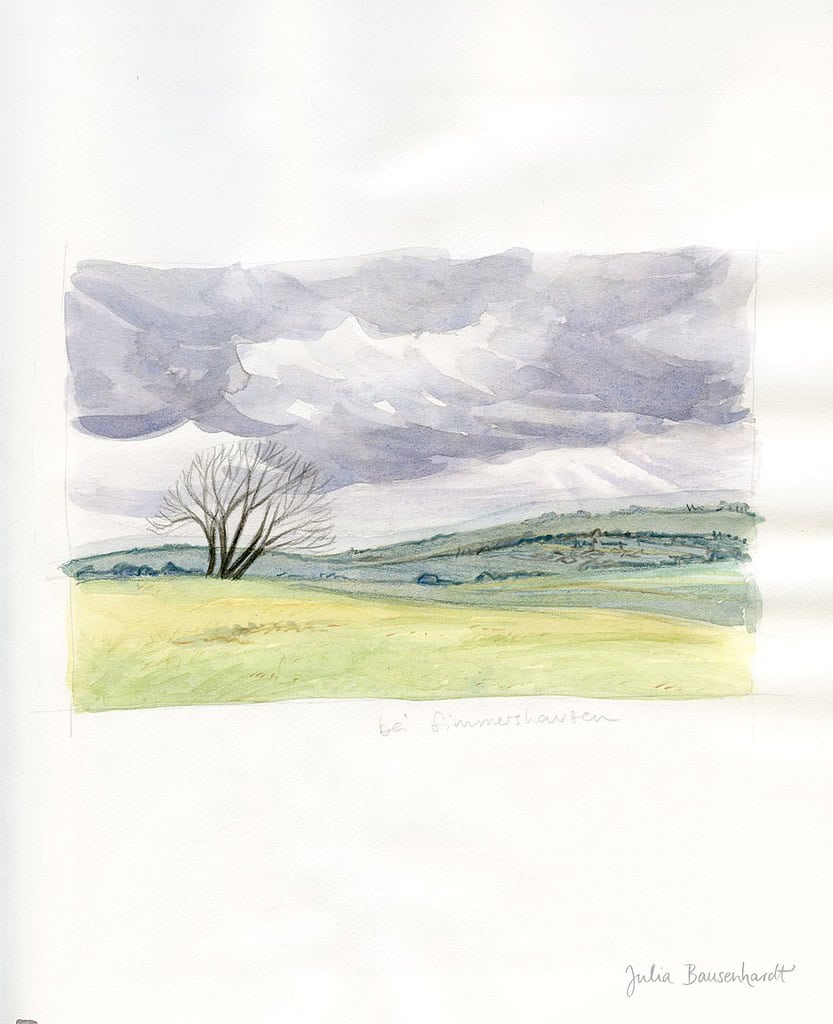
Another more detailed landscape, both with a bit of colored pencil added on top. You can see how the thin paper (185 gsm) buckles when lots of water is applied. It’s been a while since I’ve really had the time for landscape sketches, and I enjoy the muted colors of this season.
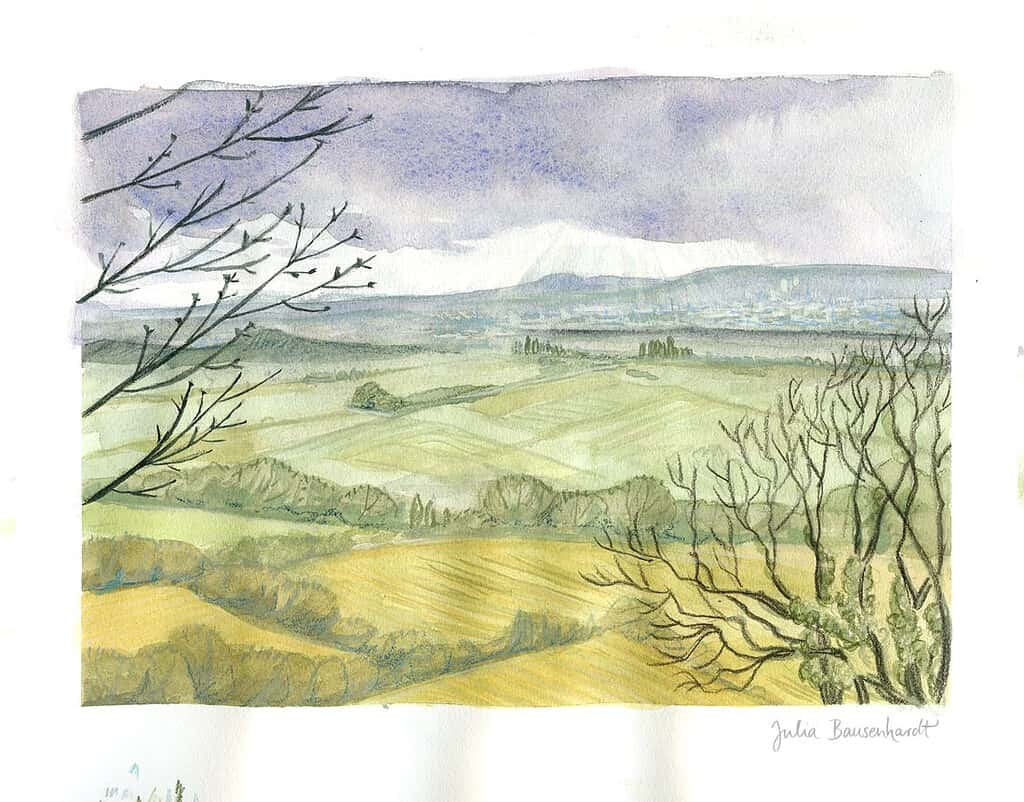
I hope you enjoyed this sketchbook tour. I’ve noticed that I feel drawn to trees right now, and I enjoy exploring winter landscapes. As for tools, I really enjoy the Derwent Drawing pencil currently, they’re soft and have wonderful muted colors. I mix them with my other colored pencils.
What are you currently sketching?

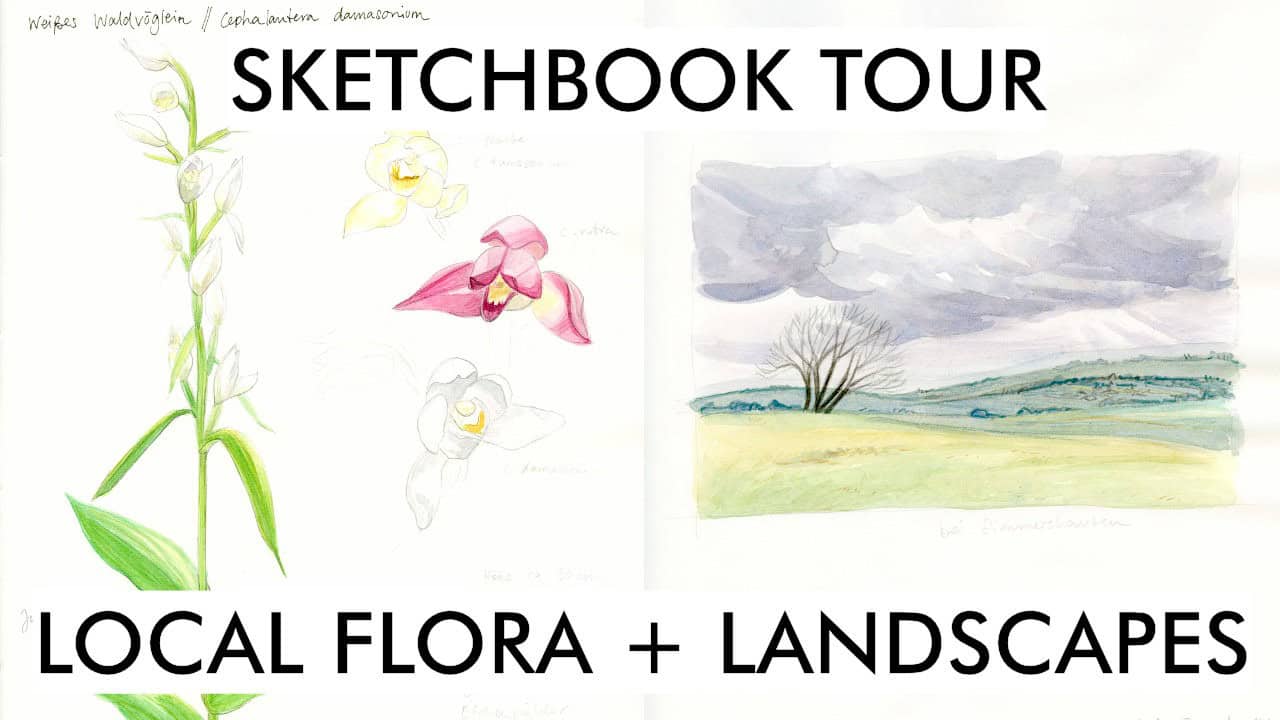

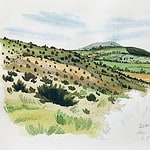
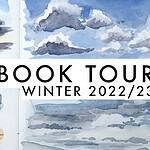

So beautiful! Trees without leaves are difficult (trees WITH leaves are difficult, too, come to think of it)! I still haven’t figured them out.
Thank you Lynn! I agree, trees are kind of difficult. This year I’ve accepted the challenge! 🙂
Lovely work and explanations……your little landscapes and tree studies are beautiful.
Thank you so much Janey!
Ayer mismo escribía un comentario, que me encontraba deseosa de ver tus trabajos y hoy al mirar en el blog lo he visto y me han encantado. Me parecen muy delicadas las orquídeas pero lo que más me ha llamado la atención son esos cielos grises tan preciosos y tan difíciles de conseguir para mí. Me encantan tus árboles y ahora que estoy atravesando una situación personal un poco difícil, me estoy aficionando a salir más por los alrededores de donde vivo y observar los pájaros más atentamente y hacer dibujos de ellos aunque son tan rápidos que me ganan.
Aquí también en Cantabria, norte de España hace frío para estar mucho rato en la calle y poderse sentar para poder observar mejor, así que también me ayudó de las fotografías y hago mis pequeños pinitos puesto que soy muy principiante.
Un abrazo y deseosa de seguir viendo sus trabajos que me encantan.
Many thanks Marta! I mix the gray from blues and different earth tones, sometimes a bit of violet. Maybe I should do a post about this.
I hope you’ll find calmness when you’re outside watching nature. Sketching live birds is definitely hard!
Gracias Julia. Estoy haciendo tu curso de cielos y nubes. Pero me gustan mucho estos grises, invernales… Si me gustaría un post. Y también sobre árboles desnudos. En algún post tuyo he visto una manera de encajar los árboles y luego distribuir las ramas que me pareció muy interesante. Un saludo
I’ve noted it and will hopefully have the time to write an article about both soon.
I think a have a bit about tree shapes in my winter class, but that needs to be updated!
Very lovely sketches – I especially enjoyed the landscapes with the fluffy, grey lined clouds! Thank you for sharing!
Thank you very much Karen!
Dear Julia,
I have been following your posts for more than a year now and I always enjoy them. I wanted to ask – how to get a very light lilac shade from a very basic set of watercolours? I wanted to draw some crocus flowers – it’s a pity I cannot attach an image here, but here is a link to a picture with a similar plant (the 1st image in the post) – yet mine was even lighter and more delicate https://anoregoncottage.com/flower-of-february/ I tried red+blue, but it did not really work, because it renders purple (in my set I have 2 blues and 2 reds but neither combination worked)
Thank you for being here, dear Linda!
Do you have a very cool red or pink in your palette, like a magenta color? It’s sometimes called quinacridone red, ruby red, quin. rose – but it will not look like a red, but like a very intense pink. If you mix this with blue (ultramarine blue should be good), you should be able to get a similar lilac out of it. To make it lighter, add more water, or just a little amount of white. It can be a bit tricky to get the exact hue – especially for spring flowers (I’ve noticed this too). I hope this helps you somehow.